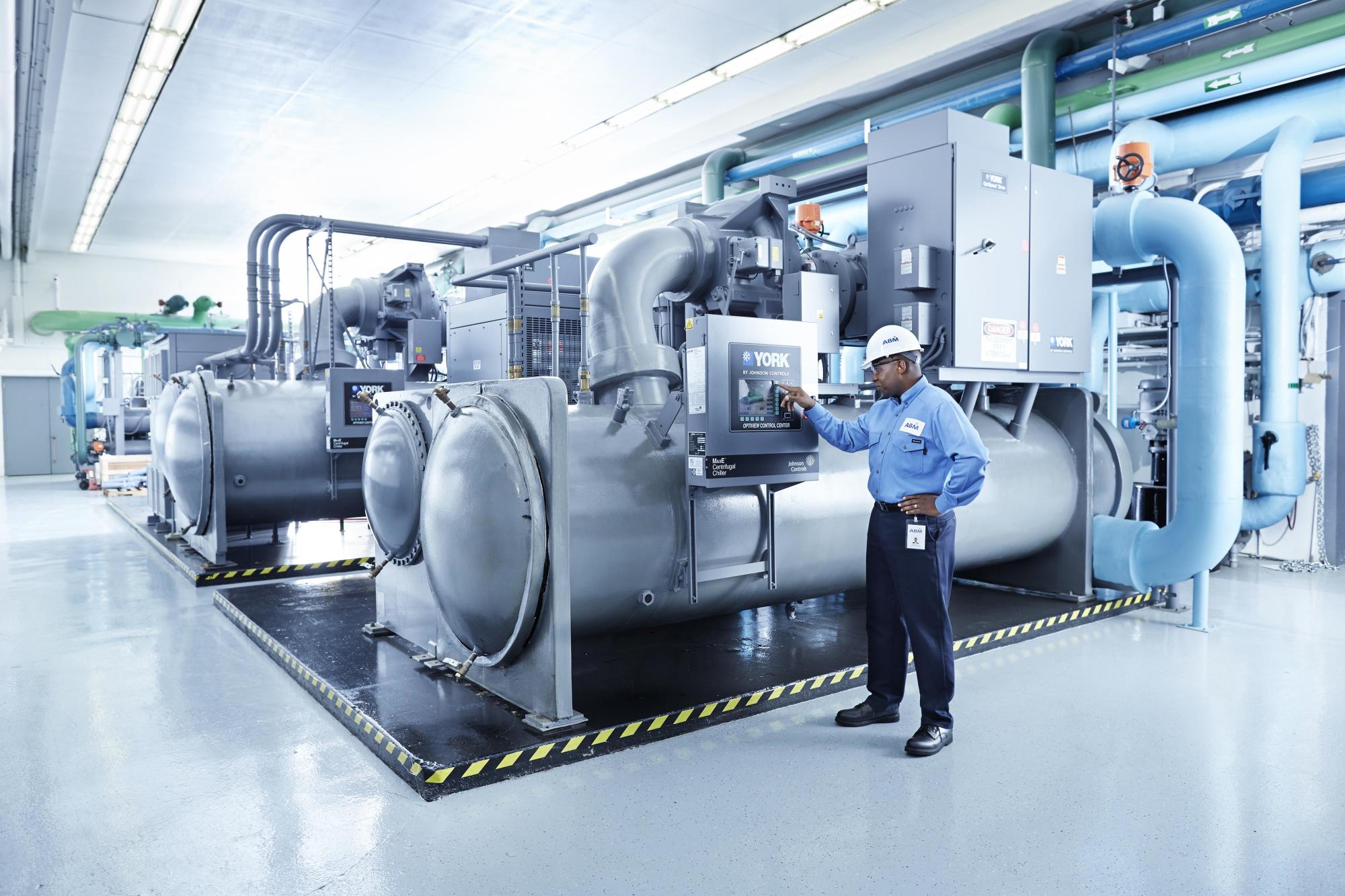Artus Launches White Paper on the ‘Carbon Conundrum’
HVAC manufacturer Artus has launched a white paper challenging the building sector to consider what is really impeding the move to greater carbon control. The paper...
Read Full Article
Luke Gorman from ABM explores the impact of HVAC on the environment and how facilities management now functions as a strategic ESG partner.
Luke graduated from Queen's University, Belfast, in 2020 with a master's degree in engineering. He held graduate roles at Moy Park and Veolia before becoming an Energy Management Engineer at ABM Ireland in 2022. Luke was promoted to UK & Ireland Sustainability Compliance Lead at ABM in 2024. He is part of a cross-functional team of environmental, social impact and corporate responsibility experts with specific expertise in carbon reporting strategies and solutions.

Picture: a photograph of Luke Gorman. Image Credit: ABM
As global energy demands surge, climate change accelerates, and costs rise, businesses are prioritising sustainable operations. As a result, the FM sector finds itself at the centre of addressing some of the world’s biggest challenges. One example is the fact that emissions from combustion devices account for 97 per cent of heat production in Europe, making HVAC systems a major contributor to energy consumption in commercial buildings.
In the UK, where 40 per cent of non-residential buildings were constructed before 1970, ageing infrastructure exacerbates energy inefficiencies and carbon emissions. Progress in transitioning to net-zero carbon emissions is being hindered by a lack of retrofit expertise, according to research from the Building Services Research and Information Association (BSRIA). Addressing this challenge is not only an environmental necessity but also a regulatory requirement.
With energy prices on the up, companies in the UK and Ireland are seeking solutions that balance operational efficiency with sustainability and there are actionable steps companies can take to mitigate the impact by reducing energy usage and sourcing renewable alternatives. Smart buildings powered by IoT, AI and data analytics also offer a pathway to reducing HVAC-related emissions and cost savings.
The key lies in leveraging advanced technology alongside a highly efficient integrated team to transition from reactive to proactive energy management. This ensures businesses are well-placed to weather future energy cost rises and help protect the environment.
"FM has evolved beyond traditional maintenance and cost-efficiency to now serve as a strategic partner in helping clients achieve and surpass their ESG goals."
Traditionally, HVAC maintenance has depended on reactive repairs or planned preventative maintenance, often leading to unnecessary expenditure. By integrating IoT sensors and AI-driven analytics, businesses can shift to predictive maintenance. The use of sensors and high-usage data analysis enables rapid intervention by tracking real-time performance, detecting problems before breakdowns, reducing energy wastage and doing away with unnecessary investigations.
Schneider Electric has indicated AI in buildings could reduce their energy consumption by 15-25 per cent over the next four years. In addition, American-Irish HVAC company, Trane Technologies recently acquired BrainBox and its suite of automated building management tools, to monitor and operate HVAC systems and ultimately reduce the carbon footprint of commercial buildings. Such data informs and reinforces a robust asset management strategy of validation and verification. Understanding the assets within a contract based on their criticality ensures that maintenance efforts are prioritised effectively, incorporating task tracking, maintenance for compliance, performance management and a proactive approach to stocking and replacing spares and parts.
An upgraded and well-maintained HVAC system operates more efficiently, consuming less energy and extending the lifespan of equipment. Companies can also reduce energy demand by investing in high-quality insulation, energy-efficient windows, and sealing air leaks. Proper ventilation strategies, such as heat recovery ventilators (HRVs) and demand-controlled ventilation (DCV), further enhance efficiency by boosting airflow without overburdening HVAC systems.
The adoption of smart thermostats and Building Automation Systems (BAS) means temperature and lighting regulation can be based on real-time occupancy, time of the day and external climate conditions. Businesses can also remotely monitor energy use, making dynamic adjustments and decisions influenced by data.
We can see this in practice with "free cooling", which enables the reduction of mechanical cooling by programming Building Automation Systems (BAS) to automatically switch to ambient outdoor air when thresholds are met – significantly lowering HVAC-related energy consumption.
Data analytics plays a critical role in transforming HVAC efficiency. By monitoring gas, electricity, and water usage in real-time, businesses can determine energy baselines, track variations and target improvements.
AI serves to monitor and interrogate long-term trends and enable continual adjustments while reducing staff time on these tasks. Providing data at 30-minute intervals, as opposed to manually checking monthly or quarterly invoices, the use of AI means discrepancies can be dealt with rapidly.
These Monitoring and Targeting (M&T) tools can also help companies comply with the Streamlined Energy and Carbon Reporting (SECR) regulations, showcasing the changes made and the resulting impact.
Nothing can be achieved at scale without partnerships and the sharing of knowledge, learning and best practice, particularly in the ever-evolving sustainability space. FM has evolved beyond traditional maintenance and cost-efficiency to now serve as a strategic partner in helping clients achieve and surpass their ESG goals. Through the integration of advanced technologies, deep technical knowledge, and on-the-ground specialist expertise, the FM industry is well-positioned to deliver transformative, sustainable solutions. This commitment not only drives meaningful change but also contributes to the long-term protection of our planet.
Picture: a photograph of a person wearing ABM branding uniform, using the control panel on a large-scale HVAC system. Image Credit: ABM
Article written by Luke Gorman | Published 09 June 2025
HVAC manufacturer Artus has launched a white paper challenging the building sector to consider what is really impeding the move to greater carbon control. The paper...
Read Full ArticleContinuing our EMEX Focus Interview series, James Beck from Emissis introduces their latest energy reduction technology. Emissis delivers a powerful suite of solutions...
Read Full ArticleThe world’s largest electric heating manufacturer is calling for carbon emissions targets to remain a core component within the amended government building...
Read Full ArticleMore than half of global organisations plan to increase energy efficiency spending in the next 12 months according to the Johnson Controls' 2018 Energy Efficiency...
Read Full ArticleCan the built environment unlock substantial carbon savings by scrutinising mechanical, electrical and plumbing systems? Max Gibbens, Senior Environmental Consultant...
Read Full ArticleBarratt Redrow is set to deliver the UK’s largest net-zero carbon housing development. With 576 new homes, a new primary school, open space, community buildings,...
Read Full ArticleSaltire Facilities Management, one of the largest gas central heating and electrical firms in Scotland, has been acquired for an undisclosed sum by Daikin Airconditioning...
Read Full ArticleThe Building Research Establishment will work with the Department for Energy Security and Net Zero to develop both the Home Energy Model product recognition system and...
Read Full ArticleA smart sensor trial at Transport for London’s Stratford office is predicted to cut 40 tonnes of carbon dioxide emissions annually. The year-long pilot, a...
Read Full ArticleCBFM, the Northeast-based HVAC specialist, has completed the installation of 4 x 800 litre indirect cylinders with destratification pumps at Cassaton House in...
Read Full Article